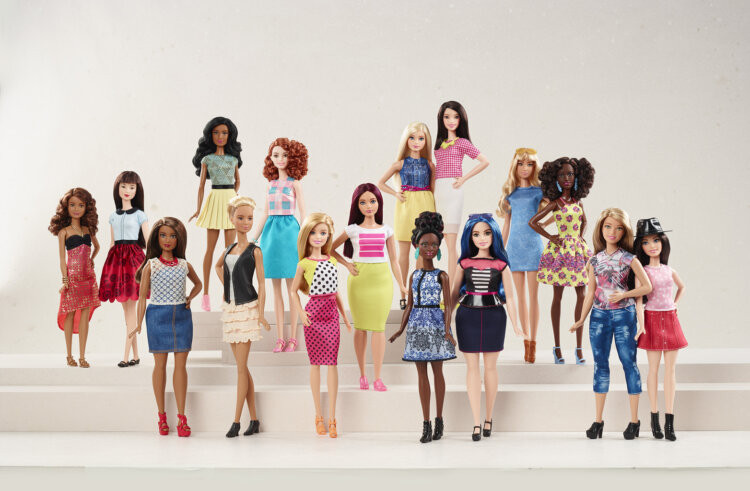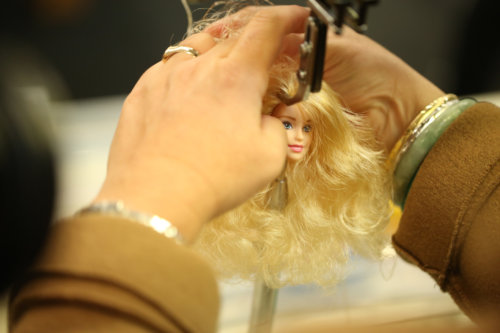
Growing up, I loved dolls, and not only did I play with them, I cared for them. Sure, there were some that I wore out, contorting their figures to match the stories in my imagination. But I was also a keep-it-in-the-box kind of girl. I knew which dolls were special, which should be saved for posterity.
Born in 1990, I’m part of the American Girl generation. My most formative doll experiences happened with that brand and its educational bent, historical novels, and feminist messaging. I had Barbies, but even at a young age I regarded them as museum pieces. I knew from an early age that Barbie was beautiful, but a reflection of unattainable beauty standards. I loved Barbie mainly because I knew she was a relic.
I apparently wasn’t alone. The new Hulu documentary Tiny Shoulders: Rethinking Barbie details that the ’90s were a particularly bad time for the legendary fashionista. Her reputation started to crumble as her adoring public began to actually question the pressures her identity put on girls. The film from Andrea Nevins isn’t here to drag Barbie through the mud, though it does bring up all the criticisms that have been lobbed at the little-waisted, big-breasted icon over the years. Rather it wants to look at Barbie’s many contradictions, and examine how a toy started with good intentions became a symbol for Everything Wrong.

While the history of Barbie makes up the backbone of the film, the more compelling narrative is the one that plays out when it follows the women and men working at Mattel as they develop Project Dawn. That operation, with a name out of a James Bond movie, resulted in the series of new dolls that debuted in 2016 with three new body types: Curvy, Tall, and Petite. Here, Nevins presents an honest look at a company grappling with its own storied legacy without a lot of easy answers. The employees know they need to evolve, they have heard the complaints, but they also love this plastic woman and how she figures into their personal narratives.
It’s remarkable to see just how complicated it was to introduce the new styles and how much internal debate took place. To outsiders like me, pursuing this initiative would seem like a no-brainer. But, internally, the employees at Mattel wonder if it’s a no-win situation. There are questions like: Eliminating Barbie’s prominent thigh gap is the right thing to do, but does that decrease the doll’s mobility? Will the Barbie experience of sharing clothes be eliminated if the dolls are different sizes? How will kids react? (Footage of test groups shows us: Not well.)
The employees know they need to evolve, they have heard the complaints, but they also love this plastic woman and how she figures into their personal narratives.
Along the way Nevins allows the women responsible for putting Barbie out into the world to become just as compelling figures as Barbie herself. There’s Kim Culmone, the head of design, whose laptop is adorned with a “The Future Is Female” sticker and who possesses a stack of feminist literature. If Culmone is represented as the progressive voice inside Mattel, then publicist Michelle Chidoni is her foil. She’s more tentative, fearful of opening up new cans of worms.
Though Tiny Shoulders certainly presents voices in opposition to Barbie, it compellingly argues that she has always been ahead of the curve. Ruth Handler created her as an alternative to the baby dolls that were dominating the market, thus providing a way for girls to fantasize about having careers and independence, rather than simply mothering. In the 1980s, former Mattel executive Jill Barad gave her a can-have-it-all mentality with outfits that transitioned from the office to a night on the town. Sure, it highlights where Barbie misstepped: The slumber party set complete with a weight-loss book, which had the phrase “Don’t Eat” on its cover; the talking version where she complained about how hard math was. But I get the sense Nevins sees Barbie, ultimately, as a force for good.
And that’s totally justified. Still, I couldn’t help shake the sense that the film could go deeper. It only briefly touches on the issue of racial diversity, even though one of her talking heads, Manifesta author Amy Richards, argues in the opening moments that when adults talk about Barbie one of the things they are also talking about is “white supremacy.” The film doesn’t really explore the impact of Project Dawn beyond its launch. Nearly two years out, has it really made an impact? The mere existence of Tiny Shoulders proves we still think of Barbie one way: Skinny and blonde. Sure, progress has been made, but Barbie’s never going to stop being exactly who she was in 1959.
Watch Tiny Shoulders: Rethinking Barbie on Hulu now. Don’t have a Hulu account? Sign up here.


Grok Nation Comment Policy
We welcome thoughtful, grokky comments—keep your negativity and spam to yourself. Please read our Comment Policy before commenting.